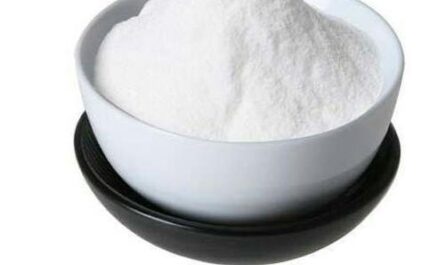Pyrethroids are a class of synthetic insecticides that are structurally similar to the natural pyrethrins which are found in chrysanthemum flowers. They are one of the most commonly used pesticides today worldwide due to their effectiveness, low mammalian toxicity and relatively quick breakdown in the environment. Let’s take a deeper look at these important insecticides.
History and Development
The pyrethroids were developed in the 1970s as a more stable and potent alternative to the natural pyrethrins. The first generation pyrethroids such as allethrin and tetramethrin were very similar to pyrethrins chemically but provided longer lasting activity. In the 1980s, second generation pyrethroids like deltamethrin, cypermethrin and lambda-cyhalothrin were created which had improved insecticidal activity and broader spectrum of pest control. These new pyrethroids replaced many organophosphate and carbamate insecticides used at the time due to their lower human toxicity. Today, pyrethroids make up approximately 25% of the global insecticide market and are used extensively worldwide in agriculture, public health programs and at home.
Mechanism of Action
Pyrethroids work by interfering with the sodium channels in the nervous system of insects. Specifically, they modify the activity of the sodium channels in nerve cell membranes. When an insect comes in contact with or ingests a pyrethroid, the chemical causes the sodium channels to remain open longer than they should during nerve impulse transmission. This results in spontaneous discharges of the nervous system leading to paralysis and death of the insect. The sodium channel binding site of pyrethroids is different from natural pyrethrins allowing the synthetic versions to be more potent and have exaggerated effects compared to the parent compounds from chrysanthemums.
Types of Pyrethroids
There are two major types of pyrethroids – Type I and Type II. Type I pyrethroids such as allethrin and resmethrin are more toxic to insects but are broken down rapidly in the environment. They are used mainly for space sprays and aerosols. Type II pyrethroids like cypermethrin, deltamethrin and lambda-cyhalothrin are less acutely toxic but have longer lasting residual activity on surfaces. They are frequently used for agriculture and public health owing to their greater persistence. Newer combinations of Type I and Type II pyrethroids have also been produced to achieve high potency as well as long-lasting effects.
Uses and Benefits
Some key uses and benefits of pyrethroids include:
– Agriculture – Pyrethroids are widely applied to control insect pests on a wide variety of food and cash crops such as fruits, vegetables, cereals and cotton. They are effective against chewing and sucking insects as well as flying and crawling pests.
– Public Health – These insecticides continue to play an indispensable role in vector control programs to combat disease transmitting mosquitoes, flies and other insects. Deltamethrin is a preferred pyrethroid for indoor residual spraying.
– Homes and Gardens – Commercial products containing pyrethroids are used to protect homes, lawns and gardens from insect infestations including ants, cockroaches, fleas and ticks.
– Livestock – Formulations are applied on animals, their premises and bedding to control parasitic insects like flies, lice, ticks and mites that can spread diseases.
– Stored Products – Pyrethroids are applied as space sprays, aerosols or surface coverings to storage facilities to protect grains and other commodities from beetles, moths and other storage pests.
– User Safety – They have significantly replaced organophosphates as they pose much less risk of acute toxic effects for applicators and those living nearby treated areas.
Environmental Impacts and Regulations
While pyrethroids can kill a wide range of beneficial and harmless insects along with the target pests if misused or overused. They also have the potential to contaminate soil and water if repeatedly applied or at excessive rates. Some common environmental impacts are:
– Toxic to Aquatic Life – Pyrethroids have a high toxicity to fish and aquatic invertebrates. They can affect populations if runoff carries them into streams, lakes or estuaries.
– Persistence in Sediment – Highly adsorptive to particles and sediment in water, pyrethroids tend to persist in these environments for long periods posing a threat to benthic organisms.
– Soil Dwelling Organisms – Non-target insects, worms and other soil life can get exposed through residues present at or below labelled application rates.
– Ecotoxicity Concerns – Repeated applications in the same area or rotation of different pyrethroids puts more selective pressure and increases risks to biodiversity.
To mitigate risks, most countries have stringent controls on pyrethroid usage through prescribed good application practices, limited number of annual treatments, buffer zones near water bodies and maximum residue limits. New formulations are also being introduced with improved degradability and reduced runoff potential. With judicious use following regulations, pyrethroids can continue fulfilling their role as a safer alternative to older insecticide classes.
*Note:
1.Source: Coherent Market Insights, Public sources, Desk research
2.We have leveraged AI tools to mine information and compile it




